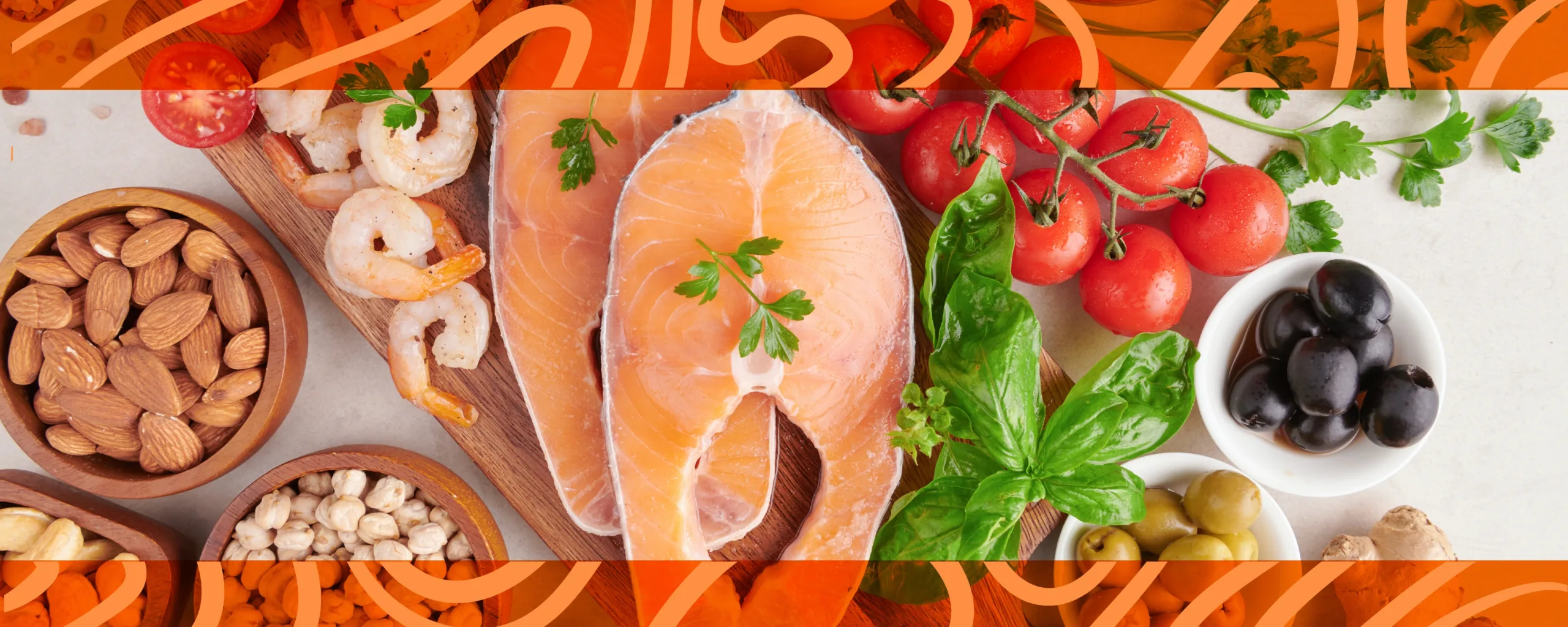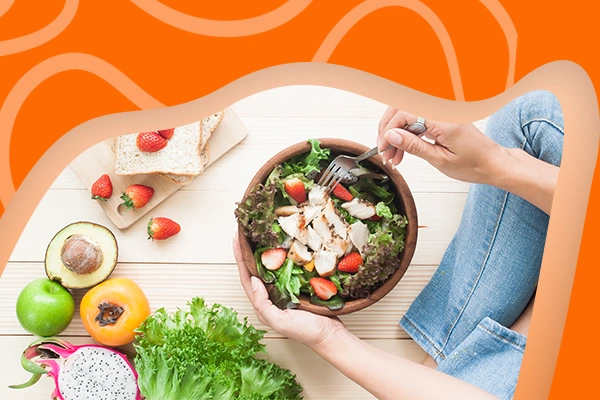What Paleo Diet Foods Can You Eat and Avoid for Better Health?
Paleo diet foods focus on whole, unprocessed items that mimic what our ancestors ate. Here’s a quick breakdown:
- ✅ Allowed: Meat, fish, eggs, vegetables, fruits, nuts, seeds, and healthy oils (like olive or avocado oil).
- ❌ Avoided: Grains, legumes, most dairy, refined sugars, processed foods, and alcohol.
By choosing the right paleo diet foods, you may support better digestion, energy, and overall health.
The paleo diet, often referred to as the “caveman diet,” is a way of eating that focuses on consuming foods that were available to our ancestors during the Paleolithic era, which dates back approximately 2.5 million to 10,000 years ago. In essence, the idea behind the paleo diet is to return to a more “natural” way of eating—one that aligns with what humans evolved to consume before the advent of agriculture and processed foods.
To achieve this, the diet emphasizes whole, unprocessed foods while avoiding modern, industrialized products. So, if you’re curious about what a paleo diet entails according to expert nutritionists, what paleo diet foods you can enjoy, and what you should avoid, keep reading!
What Can You Eat on a Paleo Diet?
The paleo diet prioritizes nutrient-dense, whole foods that are actually as close to their natural state as possible. Specifically, here are the primary food groups you can enjoy:
1. Meat and Poultry
Grass-fed, pasture-raised, and organic meats are evidently staples of the paleo diet. For example, these include:
- Beef
- Chicken
- Turkey
- Pork
- Lamb
- Game meats (e.g., venison, bison, or elk)
In particular, the focus is on high-quality protein sources that are free from additives, antibiotics, and hormones. Since our ancestors relied heavily on hunting, meat plays a central role in this diet.
2. Fish and Seafood
Wild-caught fish and seafood are encouraged due to their omega-3 fatty acid content and other essential nutrients. Common options include:
- Salmon
- Tuna
- Mackerel
- Sardines
- Shellfish (like shrimp, scallops, and lobster)
3. Vegetables
Vegetables are a cornerstone of the paleo diet because they are nutrient-rich and low in calories. Fortunately, you can eat virtually any type of non-starchy vegetable, such as:
- Leafy greens (kale, spinach, arugula)
- Broccoli
- Cauliflower
- Zucchini
- Peppers
- Carrots
- Asparagus
- Mushrooms
Additionally, root vegetables like sweet potatoes and parsnips are also allowed in moderation.

4. Fruits: One of the Common Foods in the Paleo Diet
Fruits provide natural sweetness, fiber, and essential vitamins. In general, paleo-approved fruits include:
- Berries (strawberries, blueberries, raspberries)
- Apples
- Bananas
- Oranges
- Grapes
- Melons (watermelon, cantaloupe)
Although fruits should be consumed in moderation because of their sugar content, they are an excellent source of energy and antioxidants.
5. Nuts and Seeds
Nuts and seeds are a great source of healthy fats, protein, and fiber. Paleo-friendly choices include:
- Almonds
- Walnuts
- Cashews
- Pumpkin seeds
- Sunflower seeds
- Chia seeds
However, it’s important to avoid peanuts since they are technically legumes and not paleo-approved.
6. Healthy Fats and Oils
The paleo diet supports the consumption of healthy fats, which are essential for energy and overall health. Approved oils and fats include:
- Avocado oil
- Olive oil
- Coconut oil
- Ghee (clarified butter)
- Animal fats (like lard or tallow)
Compared to processed oils, these fats are minimally processed and provide a clean energy source for your body.
7. Eggs
Eggs are a versatile and nutrient-packed food that fits perfectly into the paleo lifestyle. Whenever possible, opt for pasture-raised or organic eggs when possible.
8. Herbs and Spices
To flavor your meals, you can use fresh or dried herbs and spices, such as:
- Basil
- Thyme
- Rosemary
- Garlic
- Turmeric
- Ginger
- Cinnamon
Unlike store-bought sauces, these add flavor without relying on unhealthy additives or processed sauces.
In summary, considering the prevalence of healthy food choices in the caveman diet, it’s no wonder that nutritionists are recommending the paleo diet for weight loss.
What is Not Allowed on a Paleo Diet?
The paleo diet is all about eliminating foods that our ancestors didn’t have access to. Therefore, this includes modern processed foods, refined sugars, and agricultural products like grains and legumes. Here’s a breakdown of what to avoid in sum:

1. Grains
Grains are excluded from the paleo diet because they require processing and were not part of a hunter-gatherer’s diet. This includes:
- Wheat (bread, pasta, crackers)
- Rice
- Oats
- Barley
- Corn
- Quinoa
Furthermore, grains are high in carbohydrates and contain anti-nutrients like gluten and lectins, which are discouraged on the paleo diet.
2. Legumes
Legumes are also off-limits because they contain lectins and phytic acid, which some argue can interfere with nutrient absorption. For example, avoid:
- Beans (black beans, kidney beans, pinto beans)
- Lentils
- Chickpeas
- Soy and soy products (tofu, soy milk)
- Peanuts and peanut butter
3. Dairy: Surprisingly Not Among the Paleo Diet Foods!
Most dairy products are not considered paleo-friendly because they were introduced with farming. This includes:
- Milk
- Cheese
- Yogurt
- Butter (except ghee, which is clarified and lactose-free)
That said, some followers of the paleo diet choose to include high-quality, grass-fed butter or raw dairy, but these are generally exceptions.
4. Processed and Refined Foods: A NO in Paleo Diet!
The paleo diet strictly avoids modern processed foods, including:
- Sugar-laden snacks (cookies, candy, pastries)
- Packaged chips and crackers
- Refined vegetable oils (canola, soybean, sunflower oil)
- Artificial sweeteners
In short, the aim is to avoid anything that contains additives, preservatives, or chemicals.
5. Refined Sugars
Added sugars and sweeteners are explicitly a no-go on the paleo diet. This includes:
- White sugar
- Brown sugar
- High-fructose corn syrup
- Artificial sweeteners (like aspartame or sucralose)
Instead, natural sweeteners like honey and maple syrup can be used sparingly.
6. Alcohol
Alcohol is generally avoided on a strict paleo diet because it is a product of fermentation and processing. Beer, in particular, is off-limits due to its grain content. Nonetheless, some paleo followers may occasionally consume wine or spirits in moderation, but it’s not part of the traditional diet.
Final Thoughts: Paleo Diet Foods
The paleo diet is basically centered around eating whole, unprocessed foods that mimic the diet of our ancient ancestors. Specifically, it focuses on meats, fish, vegetables, fruits, nuts, seeds, and healthy fats while avoiding grains, legumes, dairy, refined sugars, and processed foods. (Reference)
By sticking to the paleo principles, you can potentially improve your overall health, reduce inflammation, and maintain steady energy levels throughout the day. However, it’s worth noting that the paleo diet foods may not be suitable for everyone, especially those with specific dietary needs or preferences. Always consult with a healthcare provider or nutritionist before making significant changes to your diet.
If you’re looking to adopt a diet rooted in simplicity and wholesome eating, the paleo diet may be worth exploring! Feel free to consult our specialists at elegant hoopoe to learn all about it.





